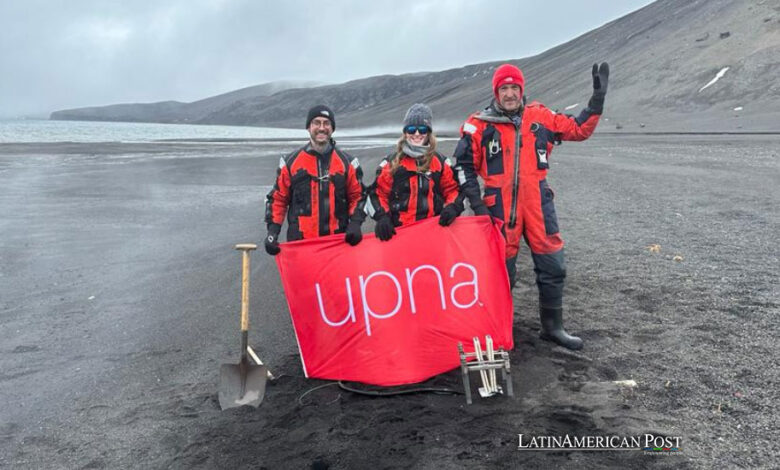Argentina and Spain Harness Volcanic Subsurface Heat for Sensor Power

In a groundbreaking collaboration, Spanish and Argentine researchers have developed a technology in Antarctica that uses geothermal heat to power volcanic monitoring stations, enhancing global volcanic activity surveillance.
In the icy expanse of Antarctica, a team of Spanish researchers, in collaboration with Argentine scientists, has achieved a world first by harnessing the geothermal heat of a volcano to generate continuous electricity. This innovative project not only paves the way for advanced volcanic activity monitoring but also sets a new standard in using renewable energy sources in some of the most inhospitable climates on Earth.
Advancing Volcanic Monitoring: A Collaborative Effort
The initiative, spearheaded by the Thermal and Fluid Engineering group from the Public University of Navarra (UPNA) in northern Spain, forms part of the VIVOTEG project. This project also includes the Astronomy, Geodesy, and Cartography group at the University of Cádiz in southern Spain, the Active Volcano Study and Monitoring group from the University of Buenos Aires, and the IDEAN—Institute of Andean Studies’ Don Pablo Groeber’ in Argentina.
The Spanish State Research Agency announced this significant breakthrough as part of the Spanish Antarctic Campaign 2023/2024. It was highlighted as a critical advancement that would allow the scientific and technological community to develop a system capable of predicting volcanic eruptions, thereby minimizing their impact on populations.
The core of the VIVOTEG project is a patented technology involving thermoelectric generators that can convert geothermal energy from active volcanic fumaroles into electricity. This technology powers remote monitoring stations tasked with observing volcanic activity, a vital capability given these environments’ extreme and isolated nature.
The Science Behind the Innovation
“Using thermoelectric modules, our technology transforms geothermal heat into electrical energy by leveraging the temperature difference between the hot fumaroles and the cold Antarctic air,” explained David Astrain, the lead professor of the UPNA team. “This system, combined with high-efficiency, passive heat exchangers with no moving parts, is exceptionally robust, reliable, and compact. It has the great advantage of generating electricity continuously, regardless of environmental conditions or solar radiation.”
This development is crucial as it addresses one of the leading technological challenges in volcanic monitoring: the energy supply needed to power sensors and geological and volcanological data transmission equipment, especially in remote locations with extreme weather conditions.
Astrain pointed out the broader implications of this technology: “About 10% of the world’s population lives within 100 kilometers of an active volcano. Therefore, geological study and volcanic monitoring are important for better understanding these phenomena and potentially predicting eruptions to reduce their impact on these populations.”
According to the World Organization of Volcano Observatories, only about 30% of the world’s active volcanoes are monitored. The lack of adequate monitoring is primarily due to the logistical challenges of installing and maintaining the necessary technology in remote areas.
The thermoelectric geothermal generator has been installed on Deception Island, one of Antarctica’s two active volcanoes. This location is also home to several geological volcanic research projects hosted at the Spanish Military Base Gabriel de Castilla.
Real-Time Data in Extreme Conditions
“This represents an unprecedented and significant advance in polar research, being the first time continuous renewable energy generation has been achieved in Antarctica, enhancing the geological study and volcanic monitoring of the area,” Astrain advocated. “With the installation of these generators, it will be possible for the first time to have real-time geological data throughout the year, including the winter, and in various places on the island remote from the Gabriel de Castilla base.”
The initial results of this technology are promising, and more thermoelectric generators are planned to be installed in the next Antarctic Campaign. “If we demonstrate its correct functioning throughout the year in Antarctica, this technology could be applied to many other volcanoes worldwide, increasing civil society’s safety by improving remote volcanic monitoring with better and earlier eruption prediction,” concluded Astrain.
Also read: Argentina Leads Groundbreaking Malbec Genome Research
This collaborative effort between Spain and Argentina underscores the potential of international scientific cooperation. It highlights how innovative approaches to renewable energy can provide solutions to global challenges, such as natural disaster preparedness and climate change adaptation.




